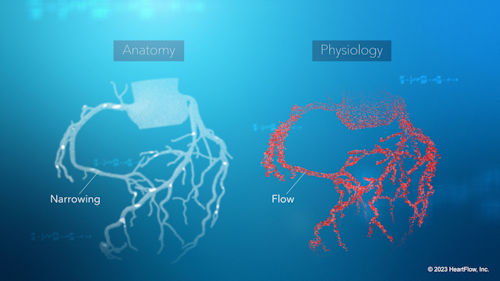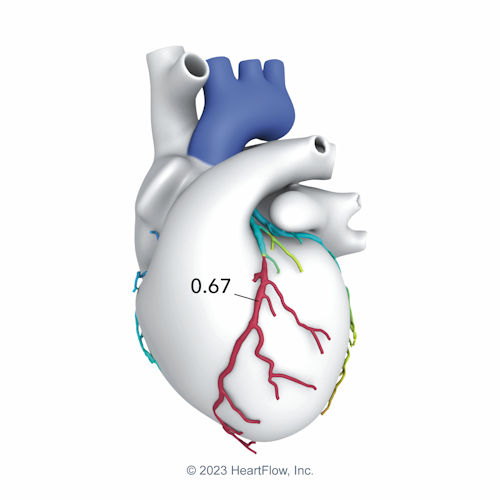
If you or a loved one experiences the symptoms of coronary artery disease (CAD), you need fast and accurate answers.
CAD develops when one or more coronary arteries become narrowed or blocked and cannot deliver enough oxygen-rich blood to the heart, causing chest pain, shortness of breath and an increased risk of a heart attack.
It’s easy to get answers by having a HeartFlow Analysis, a non-invasive test that uses data from a computed tomography (CT) scan to create a color-coded 3-D model to visualize the health of your arteries. The results will help your cardiologist determine if your heart is pumping and receiving the blood it needs to function properly.
The benefits
 A HeartFlow Analysis:
A HeartFlow Analysis:
- Enables a more accurate diagnosis of CAD
- Provides less than a 1% chance of missing disease
- Offers a streamlined experience with fewer tests and visits
How it works
Your doctor will:
- Order a standard CT scan of your heart, and if warranted, a HeartFlow Analysis
- Receive your HeartFlow Analysis showing any blockages that are impacting blood flow
- Follow up with you to discuss the findings and the next steps in your treatment plan
HeartFlow is recognized by the American College of Cardiology and American Heart Association Chest Pain Guidelines to help guide treatment for patients with heart disease.
If you have questions or would like to learn more, please speak with your cardiologist.